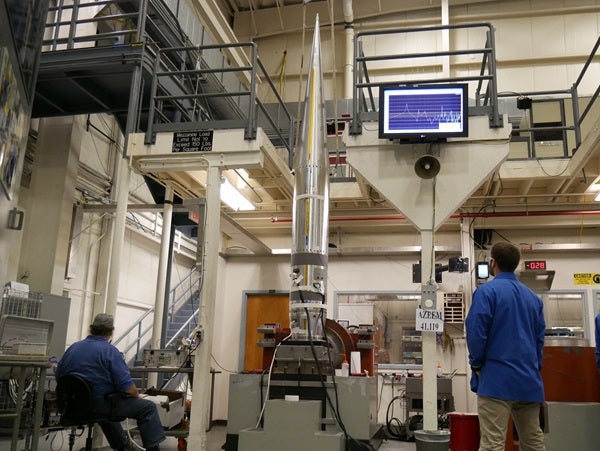University researchers and NASA scientists will soon head to Alaska’s Poker Flat Research Range (PFRR) to launch a series of four rockets designed to measure space’s X-ray emissions and to study how our upper atmosphere is impacted by added water vapor. The research, taking place from January 15- 31, differs from PFRR’s usual winter projects, which involve studying the solar wind’s interaction with Earth’s atmosphere and the subsequent auroras that form.
One of the rockets will carry the Diffuse X-rays from the Local galaxy (DXL) mission, designed to investigate X-rays that enter Earth’s atmosphere from various locations in our galaxy. “Very low energy diffuse X-rays from space are believed to come from two sources,” said the University of Miami, Florida’s principal investigator for the DXL mission, Massimiliano Galeazzi, in a press release.
“The first source is located outside our solar system and is generated by remnants of multiple supernovae explosions forming what is now called the Local Hot Bubble region of our galaxy,” Galeazzi said. “The second source is within the solar system and is generated by the solar wind charge exchange. DXL seeks to gain a better understanding of the nature and characteristics of these sources.”
Alaska is an ideal location to carry out this study due to its close proximity to Earth’s magnetic pole. The site enables researchers to measure X-rays close to where Earth’s magnetic field makes contact with the solar magnetic field, which is particularly useful for analyzing X-rays that stem from solar wind charge exchange. PFRR will also allow researchers to remain on the launch pad until strong solar winds come along, unlike most other launch sites, which don’t delay launches based on atmospheric conditions.
The remaining three rockets will be launched as part of the Super Soaker mission, which aims to investigate the dynamics of Polar Mesospheric Clouds (PMCs) and learn how they form.
“PMCs are layers of microscopic ice particles that form near 53 miles altitude and are extremely sensitive to small variations in their environment,” said Irfan Azeem, Super Soaker principal investigator from Atmospheric and Space Technology Research Associates in Boulder, Colorado. “Because they are so sensitive to variations, PMCs are often used to try to quantify changes in the upper atmosphere over many decades. However, their use as indicators of long-term change is complex and controversial because they also respond to many other shorter term variations such as tides, stratospheric weather and space vehicle exhaust.”
Since space traffic often leaves behind excess water, researchers want to see how the added vapor affects our upper atmosphere. A series of three Terrier-Improved Orion suborbital sounding rockets will be used to conduct the experiment, taking measurements of atmospheric wind and temperature before, during, and after the vapor disbursement. The first two rockets will use trimethyl aluminum (TMA) canisters to create vapor clouds, giving researchers a benchmark for measuring changes in upper atmospheric wind. The third rocket will disburse 50 gallons of water into the atmosphere at a height of 53 miles (85 kilometers). Scientists will then measure vapor disbursement, temperature changes, and PMC formation with ground instruments like the Rayleigh lidar — an advanced Mesospheric Temperature Mapper from Utah State University in Logan, being operated by the University of Alaska Fairbanks,.
The Alaskan research projects will help evaluate the sources of galactic x-rays and study how our upper atmosphere reacts to added water vapor. The University of Alaska Fairbanks Geophysical Institute has set up a subscription system for those interested in viewing or listening to the event. Those who text PFRRLAUNCHES to 33222 will receive a notification when the count has dropped below T-10 minutes, along with a link to listen to the range launch communications. Live streaming will commence at the same time and can be viewed here.











